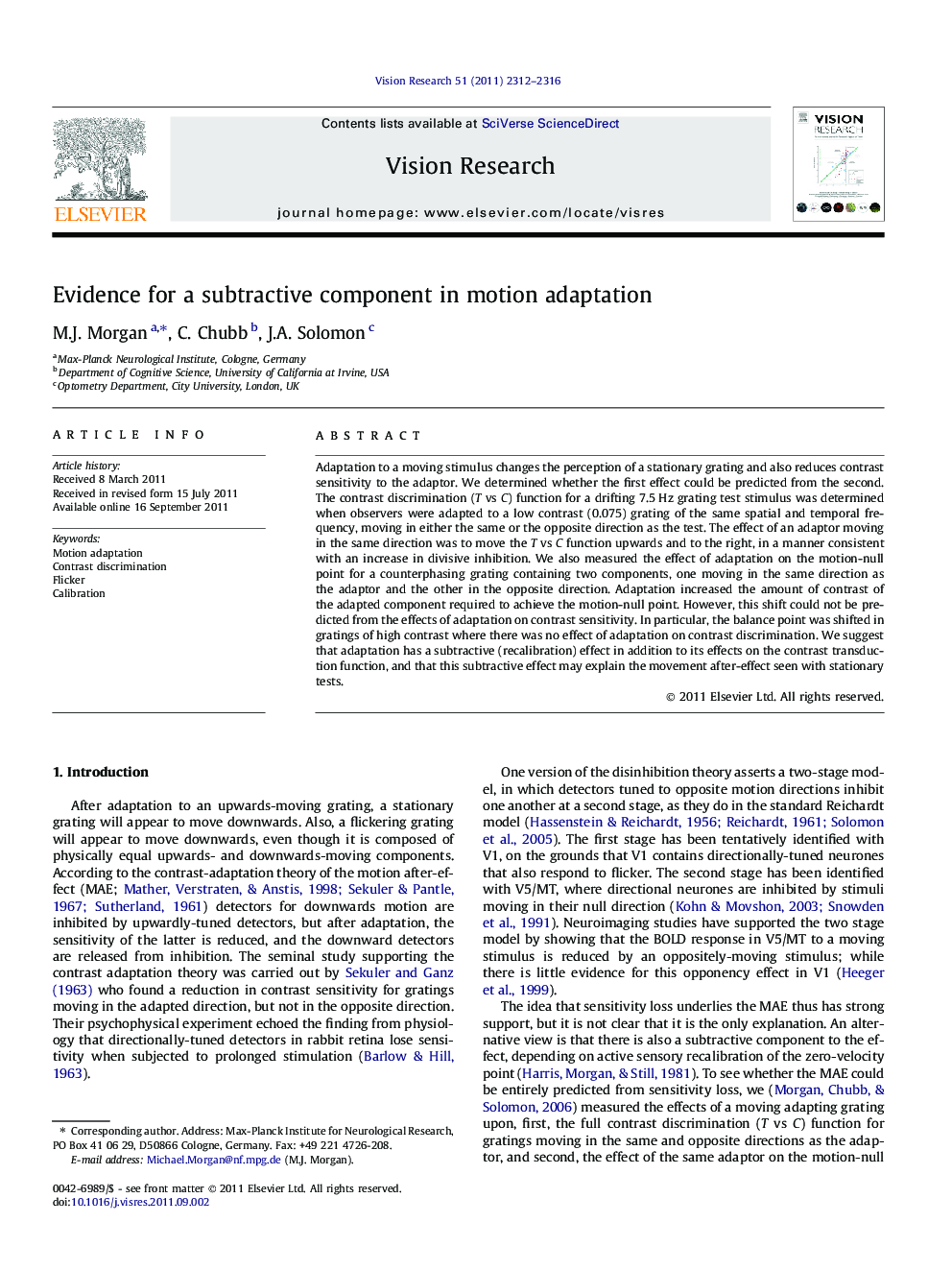| Article ID | Journal | Published Year | Pages | File Type |
|---|---|---|---|---|
| 4034114 | Vision Research | 2011 | 5 Pages |
Adaptation to a moving stimulus changes the perception of a stationary grating and also reduces contrast sensitivity to the adaptor. We determined whether the first effect could be predicted from the second. The contrast discrimination (T vs C) function for a drifting 7.5 Hz grating test stimulus was determined when observers were adapted to a low contrast (0.075) grating of the same spatial and temporal frequency, moving in either the same or the opposite direction as the test. The effect of an adaptor moving in the same direction was to move the T vs C function upwards and to the right, in a manner consistent with an increase in divisive inhibition. We also measured the effect of adaptation on the motion-null point for a counterphasing grating containing two components, one moving in the same direction as the adaptor and the other in the opposite direction. Adaptation increased the amount of contrast of the adapted component required to achieve the motion-null point. However, this shift could not be predicted from the effects of adaptation on contrast sensitivity. In particular, the balance point was shifted in gratings of high contrast where there was no effect of adaptation on contrast discrimination. We suggest that adaptation has a subtractive (recalibration) effect in addition to its effects on the contrast transduction function, and that this subtractive effect may explain the movement after-effect seen with stationary tests.
► The ‘waterfall effect’ following adaptation to a moving texture is normally explained by loss of sensitivity of detectors tuned to the adapting direction. ► We measure this sensitivity change by contrast discrimination, but show that it is not adequate to explain the after-effect.
